Calf Workouts: Best Calf Exercises for Mass
Most people don’t give much thought to their calf workouts, if they do them at all.
This is a mistake.
Doing a few dedicated calf exercises each week will not only add mass to your lower legs, it’ll help you jump higher and further, sprint faster, improve your squat and deadlift strength, and (probably) lower your risk of knee injuries in a range of sports.
What are the best calf exercises for mass and strength, you wonder? And how should you organize them into the best calf workouts? Are there any tricks or techniques you can use to help your calves grow?
Keep reading, and you’ll learn the answers to all of these questions and more. You’ll learn the anatomy of the calves, the best ways to get them to grow, and the best calf exercises and workouts you can do.
- The Anatomy of the Calves
- The Best Calf Workout
- The Best Calf Exercises for Mass
- 1. Seated Calf Raise Machine
- 2. Leg Press Calf Raise
- 3. Standing Barbell Calf Raise
- 4. Standing Calf Raise Machine
- 5. Standing Dumbbell Single-leg Calf Raise
- 6. Seated Dumbbell Calf Raise
- 7. Donkey Calf Raise
- 8. Bodyweight Single-Leg Calf Raise
- 9. Smith Machine Calf Raise
- 10. Farmer’s Walk
- FAQ #1: What’s the best calf workout for mass?
- FAQ #2: I have bad “calf genetics.” Can I still build big calves?
- FAQ #3: What are the best supplements to build big calves?
- FAQ #4: Are calf workouts for men and women the same?
- FAQ #5: Can you train calves every day?
Table of Contents
The Anatomy of the Calves
The calves are made up of two powerful muscles:
- The gastrocnemius
This is the muscle you see when you look at your calf. It’s made up of two “heads”: a medial (“inside”) head, and a lateral, (“outside”) head.
- The soleus
This is a deep muscle that lies underneath the gastrocnemius. The soleus is actually slightly larger than the gastrocnemius by volume, which means it contributes to your calves’ overall size more than most people realize.
Here’s how they look:
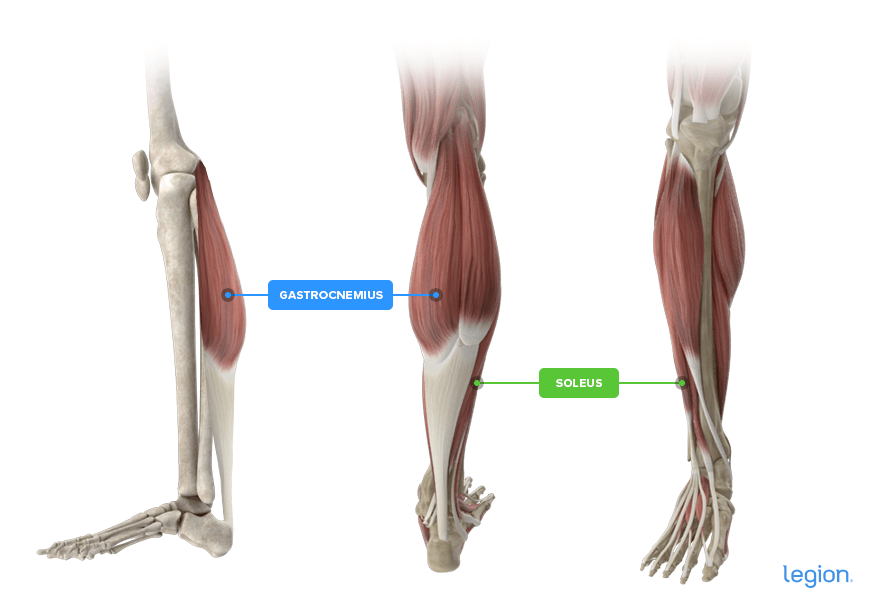
Both muscles work together to flex the ankle (point your toes), but they also differ in an important way. The soleus is attached to the ankle and the back of the shin bones, whereas the gastrocnemius is attached to your ankle and your thigh bone, which means it also plays a role in knee flexion (bending your knee).
We don’t need to get into the technical details of what this means, other than to say that when you bend your knees, you reduce the tension on your gastrocnemius muscle and increase the tension on the soleus muscle, and the opposite occurs when you straighten your knees.
This means that the gastrocnemius can’t fully contract when you do exercises like the seated calf raise or deadlift, and thus it isn’t trained as effectively by these exercises.
Thus, whenever you do calf exercises with straight knees, the gastrocnemius is more involved than the soleus, and whenever you do calf exercises with bent knees, the opposite is true.
The bottom line is that if you want to maximize your calf muscles’ size and strength, you should do calf exercises with your knees bent and straight.
The Best Calf Workout
Here’s a short and sweet calf workout you can put into practice right away:
- Choose two calf exercises from the list below (ideally, one with bent knees and one with straight knees).
- Do them for the prescribed number of sets and reps at the end of two of your workouts each week (most people like to tack them onto the end of lower body or pulling workouts).
- Do these calf workouts for 8-to-12 weeks before choosing two new exercises and repeating the process.
For example, let’s say you choose the leg press calf raise and the seated calf raise machine as your first two calf exercises.
At the end of your Tuesday pull workout, you’d do 3 sets of 6-to-8 reps on the leg press calf raise, then 3 sets of 10-to-12 reps on the seated calf raise machine.
At the end of your legs workout on Thursday, you’d repeat the same calf workout you did on Tuesday: 3 sets of 6-to-8 reps on the leg press calf raise, then 3 sets of 10-to-12 reps on the seated calf raise machine.
Use double progression to add reps and then weight in every workout for 8-to-12 weeks, then take a deload week, swap your previous calf exercises for two different exercises from the list below, and repeat the process for another 8-to-12 weeks.
The Best Calf Exercises for Mass
1. Seated Calf Raise Machine
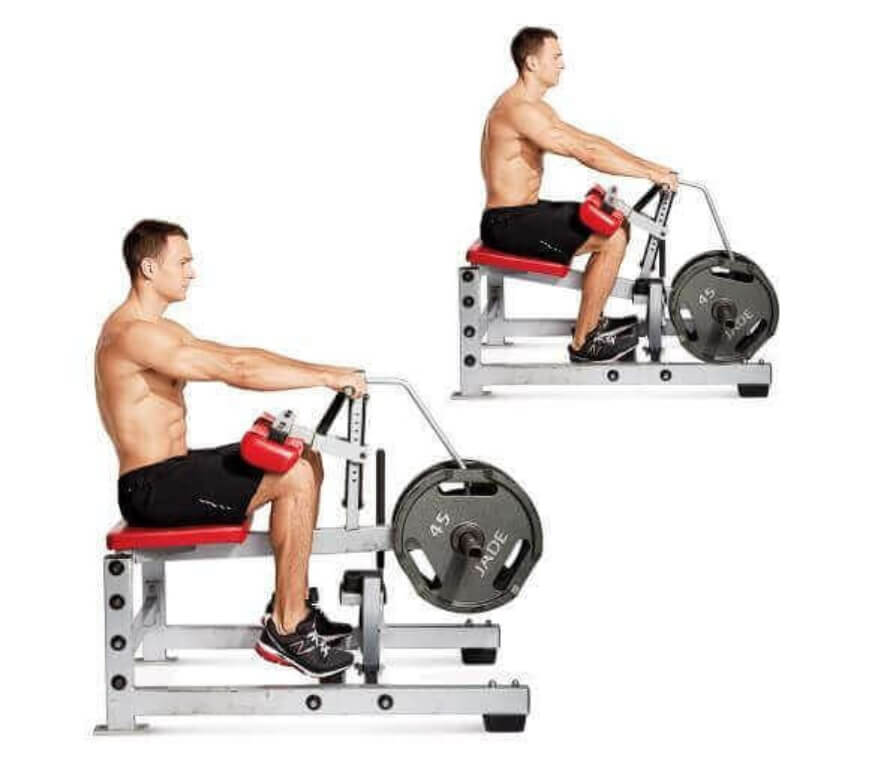
The seated calf raise machine trains your entire calf but emphasizes your soleus. As you learned a moment ago, the soleus contributes more than the gastrocnemius to the overall size of your calves, which makes the seated calf raise machine one of the best calf exercises for mass.
- While seated, adjust the thigh pad so that it rests just above your knee and place the balls of your feet on the footplate.
- Lift the pad slightly by pointing your toes, and use the safety handle to release the weight.
- While keeping your feet on the footplate, lower the weight as far as possible by lowering your heels toward the floor.
- Push through the balls of your feet to elevate the thigh pad as high as you can, and then lower your heels to return to the starting position.
Reps: 10-to-12
Sets: 3
Rest: 2-to-3 min
2. Leg Press Calf Raise
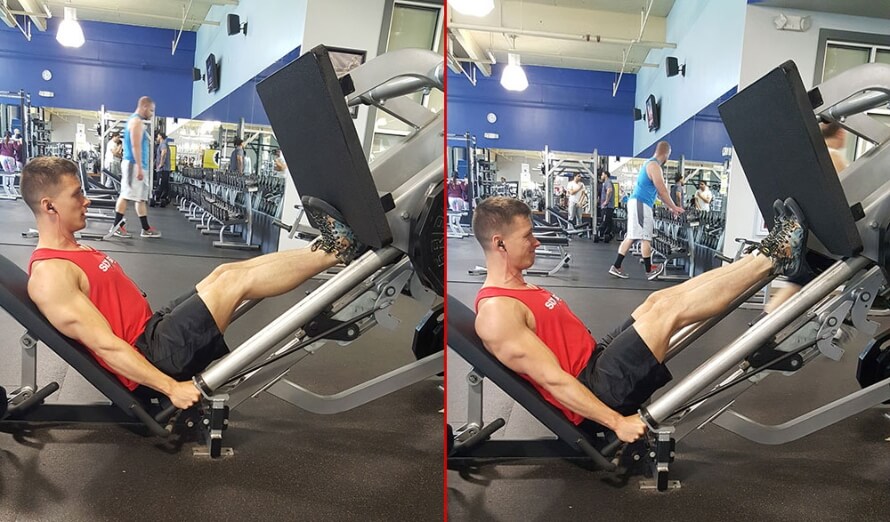
The leg press calf raise is easy to set up and load with heavy weights, which makes it ideal for building size and strength in your calves.
- Sit in the leg press machine seat and wedge your butt down into the base of the seat.
- Place your feet shoulder-width apart and toward the bottom of the footplate so that the balls of your feet are touching the footplate, but the rest of your foot hangs off the bottom.
- Using your legs, press the footplate away from your body and use the safety handles to release the weight.
- While keeping a slight bend in your knees, lower the footplate toward your chest by allowing the weight to push your toes toward your shins.
- When you feel a deep stretch in your calf muscles, push the footplate away from you by forcefully pointing your toes.
Reps: 6-to-8
Sets: 3
Rest: 2-to-3 min
3. Standing Barbell Calf Raise
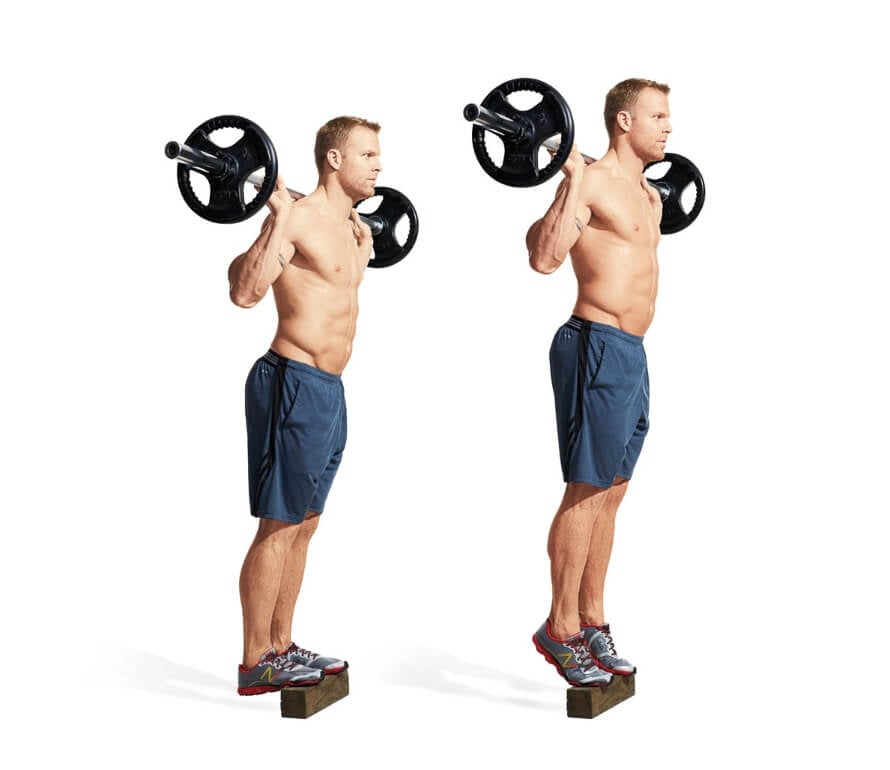
The standing barbell calf raise is a good calf exercise for when you have limited equipment. However, it requires a lot of balance and coordination, so it’s best to use lighter weights and higher reps.
- Position a barbell in a squat rack at about the height of your nipples and place a calf raise block, step, or weight plate on the floor two-to-three feet in front of the squat rack.
- Step under the bar, pinch your shoulder blades together, and rest the bar directly across your upper traps.
- Lift the bar out of the rack, take one or two steps backward taking care not to trip on the calf raise block, and place the balls of your feet on the block.
- Raise your heels as high as possible by pushing through the balls of your feet.
- Lower the weight as far as possible by lowering your heels toward the floor.
Reps: 15-to-20
Sets: 3
Rest: 2-to-3 min
4. Standing Calf Raise Machine
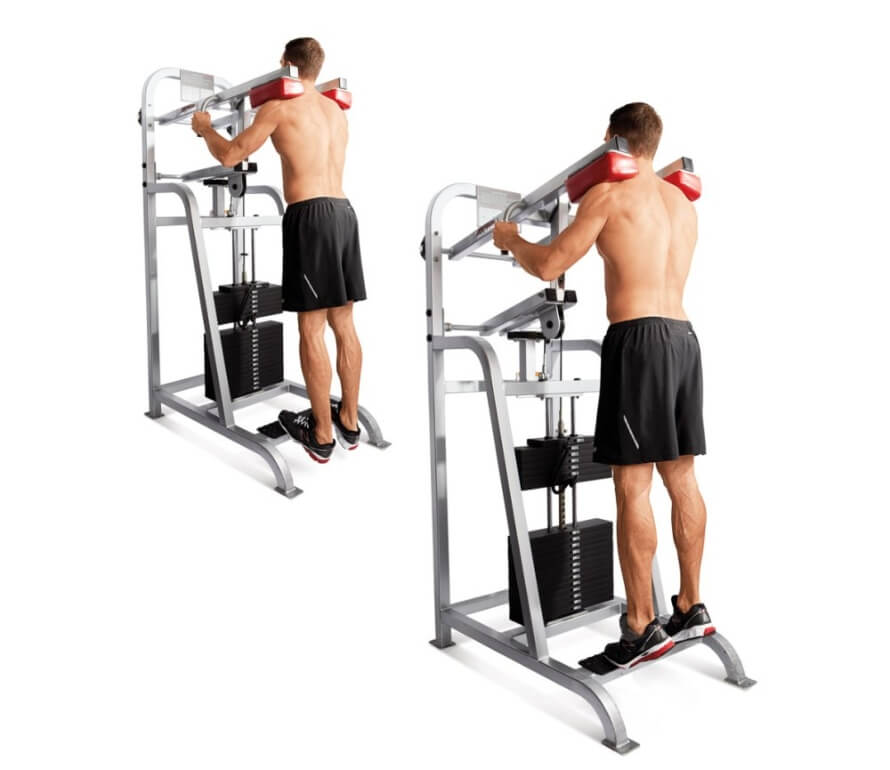
The standing calf raise machine trains your entire calf muscles. Because you perform it with straight legs, though, it emphasizes your gastrocnemius, which means it’s particularly good for developing the shape and appearance of your calves.
- Place the balls of your feet on the footplate and crouch slightly so that the shoulder pads rest on your shoulders.
- Stand up straight so that your body is supporting the weight.
- While keeping the balls of your feet on the footplate, lower the weight as far as possible by lowering your heels toward the floor.
- Push through the balls of your feet to elevate the shoulder pads as high as you can, and then lower your heels to return to the starting position.
Reps: 10-to-12
Sets: 3
Rest: 2-to-3 min
5. Standing Dumbbell Single-leg Calf Raise
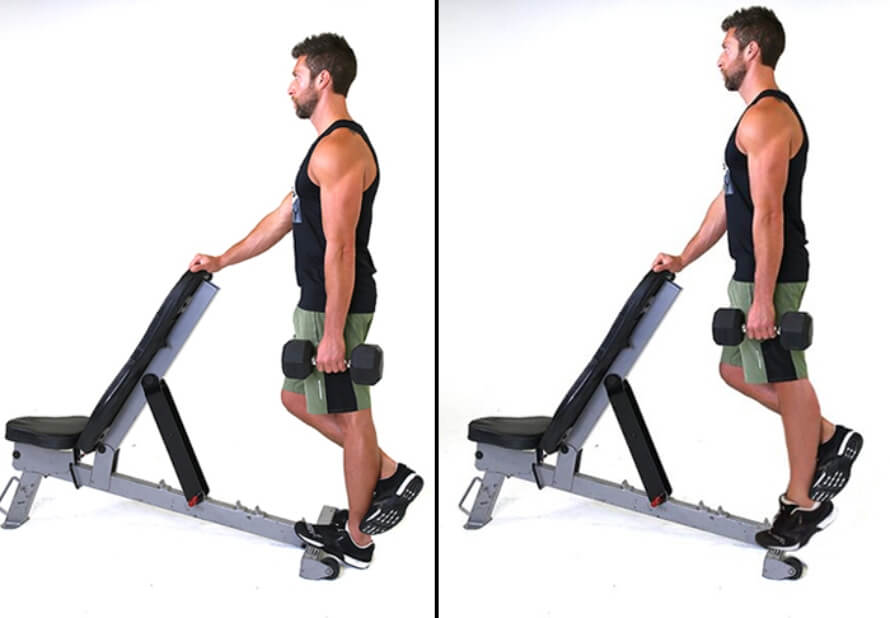
Because the standing dumbbell single-leg calf raise trains just one leg at a time, it’s useful for identifying and evening out any muscle or strength imbalances you might have. However, because it requires more balance and coordination than other calf exercises, it’s best to use lighter weights and work in a higher rep range.
- Position a calf raise block, step, or weight plate near a squat rack, or adjust a bench to between 45 and 60 degrees and stand behind it, then grab a dumbbell in your left hand.
- Hold the squat rack or the top of the bench (where your head normally goes) with your right hand for support, and place the ball of your left foot on the calf raise block or the base of the bench.
- Bend your right knee and lift your right foot off the floor.
- Raise your left heel as high as possible by pushing through the ball of your left foot.
- Lower the weight as far as possible by lowering your left heel toward the floor.
- Once you’ve completed the desired number of reps, switch sides and repeat the process with your right leg.
Reps: 12-to-15
Sets: 3
Rest: 2-to-3 min
6. Seated Dumbbell Calf Raise
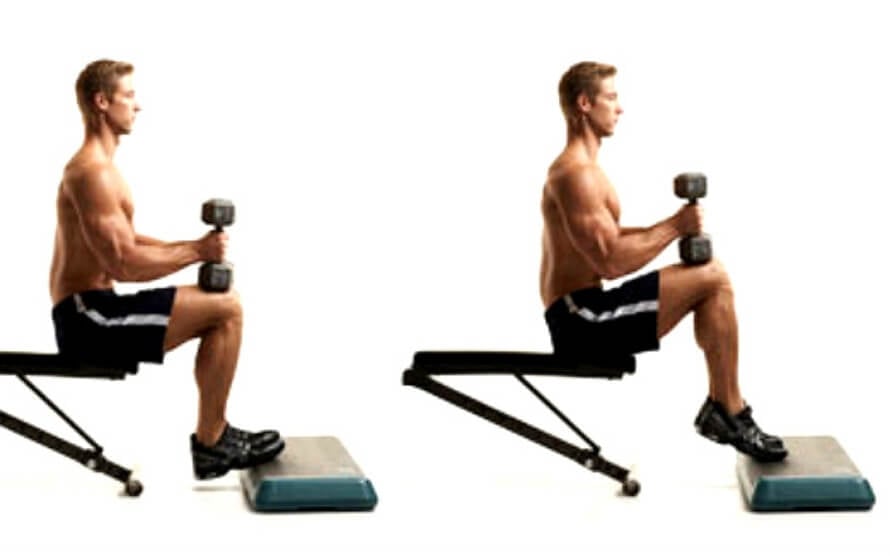
The seated dumbbell calf raise is a great way to emphasize your soleus if you have limited equipment available. However, because it can be awkward and uncomfortable to hold heavy weights on your thighs, it’s normally best to use slightly lighter weights and work in a higher rep range.
- Position a calf raise block, step, or weight plate about 12-to-18 inches away from a bench.
- While holding a dumbbell in each hand, sit on the bench, place the dumbbells on your thighs, and position the balls of your feet on the edge of the calf raise block.
- Lower the weights as far as possible by lowering your heels toward the floor.
- Raise your heels as high as possible by pushing through the balls of your feet, and then lower your heels to return to the starting position.
Reps: 15-to-20
Sets: 3
Rest: 2-to-3 min
7. Donkey Calf Raise
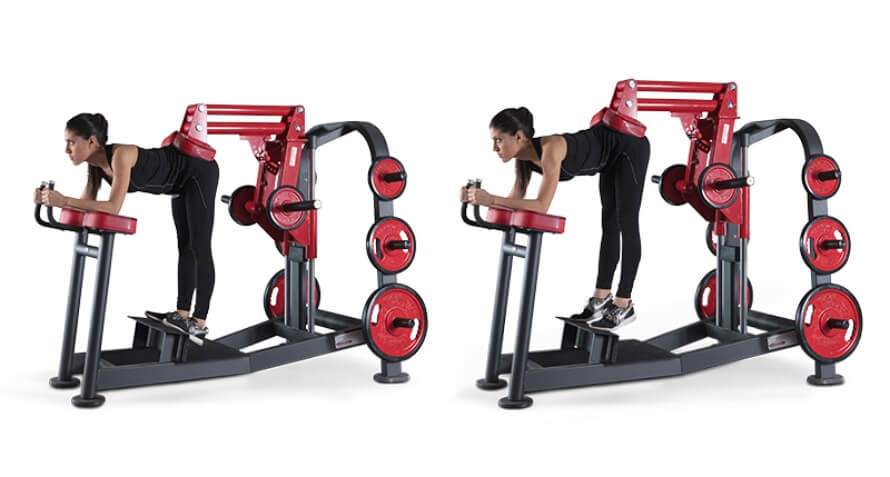
By bending over at the hips you maximally lengthen all of the muscles in the back of your legs, and research shows that training a muscle when it’s in a stretched position like this may lead to more muscle growth.
- Position yourself in the donkey calf raise machine with your elbows on the elbow pad, the balls of your feet in the footplate, and the back pad on your lower back.
- Lower the weights as far as possible by lowering your heels toward the floor.
- Raise your heels as high as possible by pushing through the balls of your feet, and then lower your heels to return to the starting position.
Reps: 10-to-12
Sets: 3
Rest: 2-to-3 min
8. Bodyweight Single-Leg Calf Raise
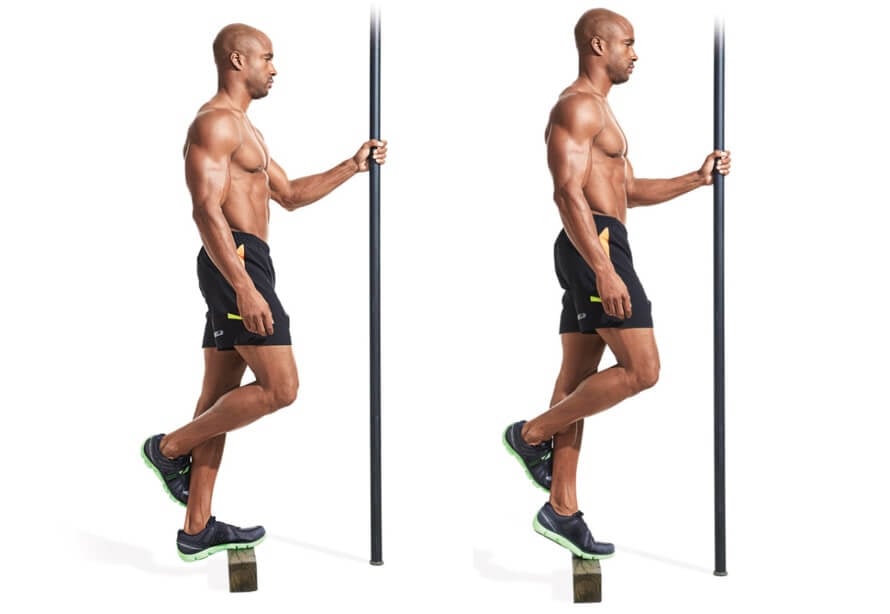
Bodyweight single-leg calf raises are a good option for people who are new to weightlifting, or if you have no equipment available. Because there’s no external weight involved, it’s best to use a high rep range and short rest periods and try to take each set close to muscular failure
- Place a calf raise block, step, or weight plate near something sturdy that you can use as a support (a squat rack or an adjustable bench set at 70-to-90 degrees work well).
- Place the ball of your left foot on the calf raise block and take hold of the support with your left hand.
- Raise your right foot off the floor by bending your knee.
- Raise your left heel as high as possible by pushing through the ball of your left foot.
- Lower your body as far as possible by lowering your left heel toward the floor.
- Once you’ve completed the desired number of reps, switch sides and repeat the process with your right leg.
Reps: 10-to-30
Sets: 3
Rest: 1-to-2 min
9. Smith Machine Calf Raise
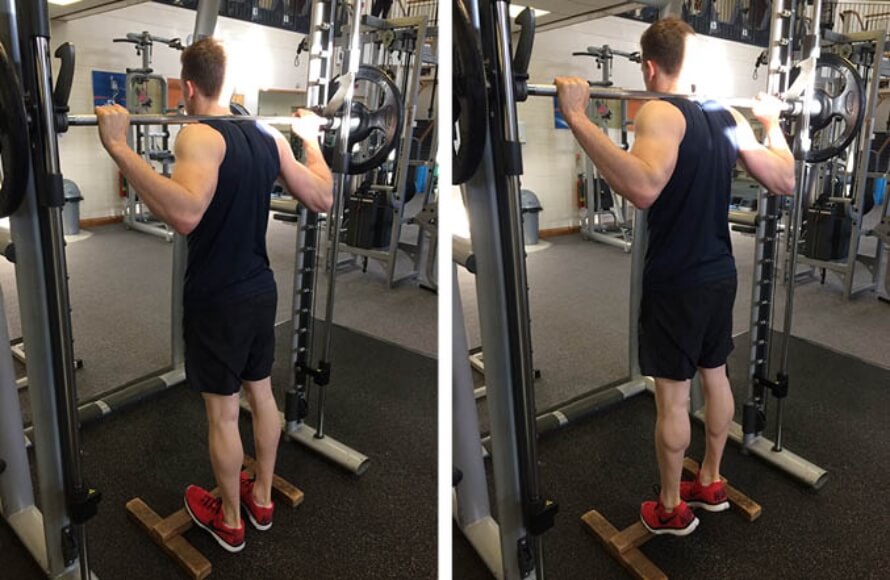
The Smith machine calf raise trains your calves in a similar way to the standing barbell calf raise. Since the bar on the Smith machine can only move up and down, though, it doesn’t require as much balance, which allows you to lift more weight and progress faster.
- Set the bar on a Smith machine at about the height of your nipples and place a calf raise block, step, or weight plate on the floor directly under the bar.
- Step under the bar, pinch your shoulder blades together, and rest the bar directly across your upper traps.
- Twist the bar to take it off the safety hooks, then stand up straight to lift the bar upward.
- Place the balls of your feet on the calf raise block and lower the weight as far as possible by lowering your heels toward the floor.
- Raise your heels as high as possible by pushing through the balls of your feet, and then lower your heels to return to the starting position.
Reps: 10-to-12
Sets: 3
Rest: 2-to-3 min
10. Farmer’s Walk
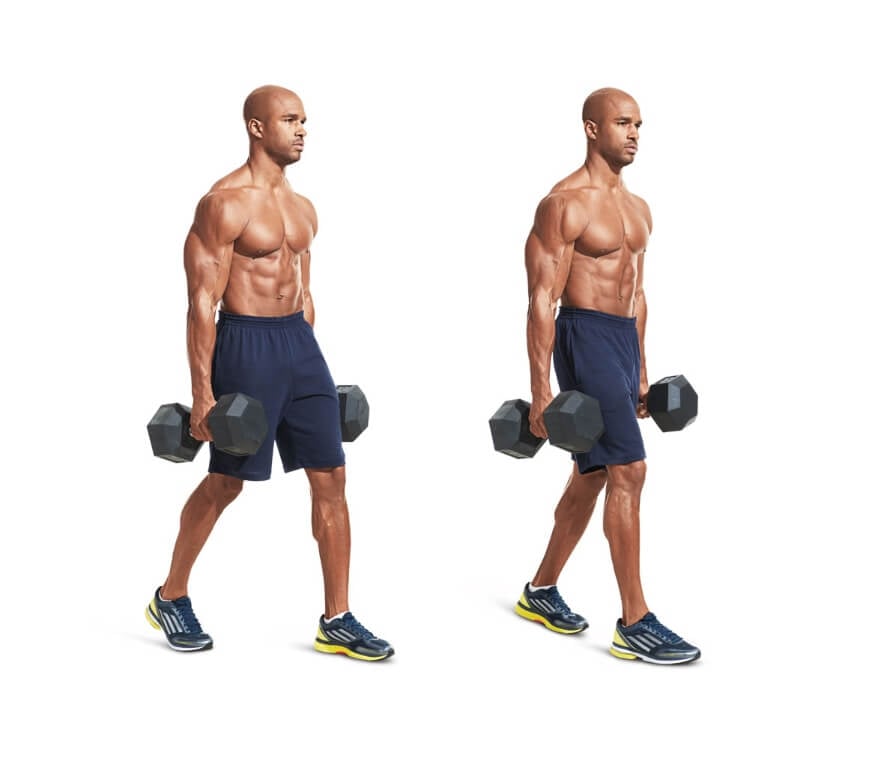
Although walking might not seem like a good calf exercise, when you carry heavy weights in each hand, your calves have to work very hard to propel your body forward.
- Stand up straight and hold a dumbbell in each hand.
- Keeping your shoulder blades pulled together and down, take small, quick, even steps forward.
- If you run out of space to continue walking forward, turn around and walk back to the starting point without dropping the dumbbells.
- Walk for a set distance, a certain number of steps, or until you feel like you have to drop the dumbbells.
Reps: As many steps as possible
Sets: 3
Rest: 2-to-3 min
FAQ #1: What’s the best calf workout for mass?
The best calf workouts for mass include . . .
- Exercises that allow you to lift heavy weights safely
- Exercises that are easy to add weight to so you can progress regularly
- Exercises that make use of various rep ranges
- At least one exercise where your knees are bent, and at least one exercise where your legs are straight
For example:
- Leg Press Calf Raise: 3 sets of 6-to-8 reps with 2-to-3 min rest
- Seated Calf Raise Machine: 3 sets of 10-to-12 reps with 2-to-3 min rest
- Standing Dumbbell Single-leg Calf Raise: 3 sets of 12-to-15 reps with 2-to-3 min rest
FAQ #2: I have bad “calf genetics.” Can I still build big calves?
Many people give up on calf training because they believe that their calves’ ability to grow is mostly based on their genetics.
Specifically, they think that if their calf muscles are predominantly made up of . . .
- Type 1 muscle fibers, then they’ll have a hard time growing their calves (because type 1 fibers have a low potential for growth), or
- Type 2 muscle fibers, then they’ll find it easy to add mass to their calves (because type 2 fibers have a much higher potential for growth)
However, recent research conducted by scientists at CUNY Lehman College suggests this probably isn’t the case.
In this study, the researchers found that the calves respond about as well as any other muscle in the body to resistance training regardless of their fiber-type composition.
That being said, there were large differences in how participants responded to the different rep ranges used in the study (which may explain why some people struggle more than others to grow their calves).
They found that for some people, high-rep training led to more growth, whereas for others low-rep training was better, and for the rest it didn’t seem to matter.
In other words, if you find your calves aren’t growing, it’s probably not because you have poor calf genetics. Instead, it’s more likely that you just aren’t giving your calves the kind of training they need to grow, and that you can kickstart your calf growth by experimenting with different rep ranges.
For example, if you normally train your calves with heavy weights in low rep ranges and haven’t seen much progress, switch to training with lighter weights in higher rep ranges and see if your calves respond better.
Or if you normally train in high rep ranges with lighter weights, it might be time to give heavy, low-rep training a try.
FAQ #3: What are the best supplements to build big calves?
Unfortunately, no amount of pills and powders are going to automagically give you big calves.
In fact, most muscle-building supplements are completely worthless.
But here’s the good news:
If you know how to eat and train to build muscle, certain supplements can speed up the process. (And if you’d like to know exactly what supplements to take to reach your fitness goals, take the Legion Supplement Finder Quiz.)
Here are the best supplements for supporting your calf workouts:
- 0.8-to-1.2 grams of protein per pound of body weight per day. This provides your body with the “building blocks” it needs to build and repair muscle tissue and help you recover from your workouts. If you want a clean, convenient, and delicious source of protein, try Whey+ or Casein+.
- 3-to-5 grams of creatine per day. This will boost muscle and strength gain, improve anaerobic endurance, and reduce muscle damage and soreness from workouts. If you want a 100% natural source of creatine that also includes two other ingredients that will help boost muscle growth and improve recovery, try Recharge.
- One serving of Pulse per day. Pulse is a 100% natural pre-workout drink that enhances energy, mood, and focus; increases strength and endurance; and reduces fatigue. You can also get Pulse with caffeine or without.
FAQ #4: Are calf workouts for men and women the same?
Yes.
There’s nothing physiologically different about men and women’s calves, so both can benefit from the same style of calf training.
FAQ #5: Can you train calves every day?
You can if you want.
Doing too much volume every day can quickly lead to overreaching and injury, though, so if you do decide to train your calves every day, make sure you scale down the number of sets and reps you do.
If you want to train your calves every day, I recommend doing just 3 sets per workout, and if your feet, knees, or Achilles tendons begin to complain, dial your training back a bit.
The post Calf Workouts: Best Calf Exercises for Mass appeared first on Legion Athletics.
https://ift.tt/3jNn70t October 28, 2021 at 06:00PM Legion Athletics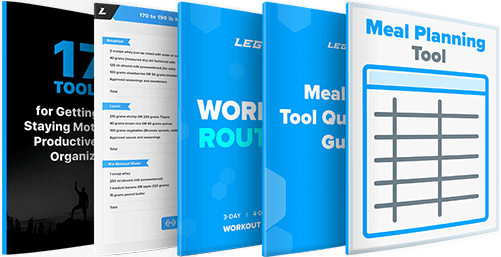
Comments
Post a Comment